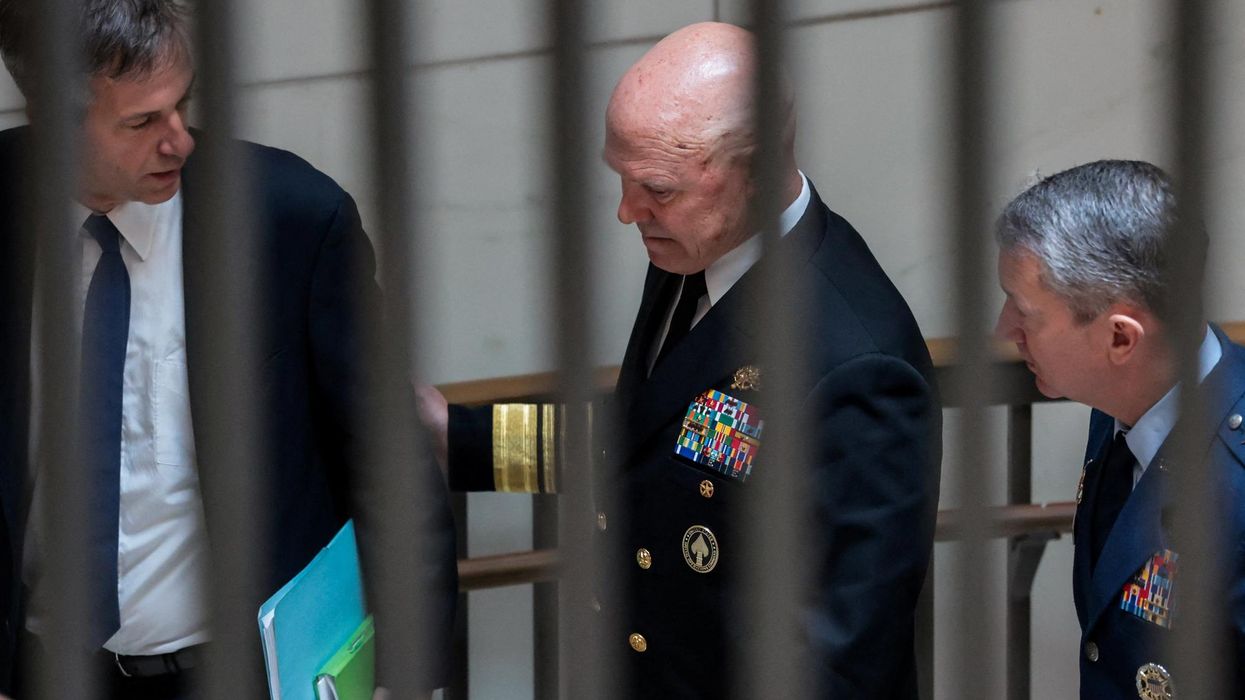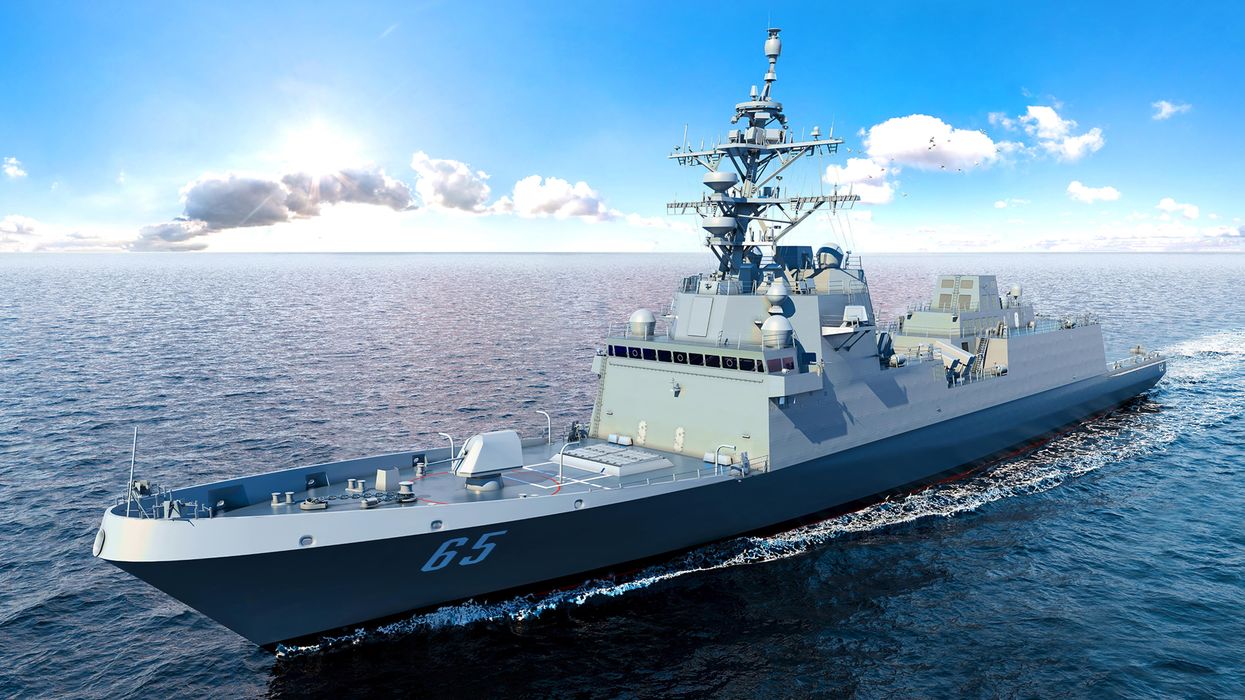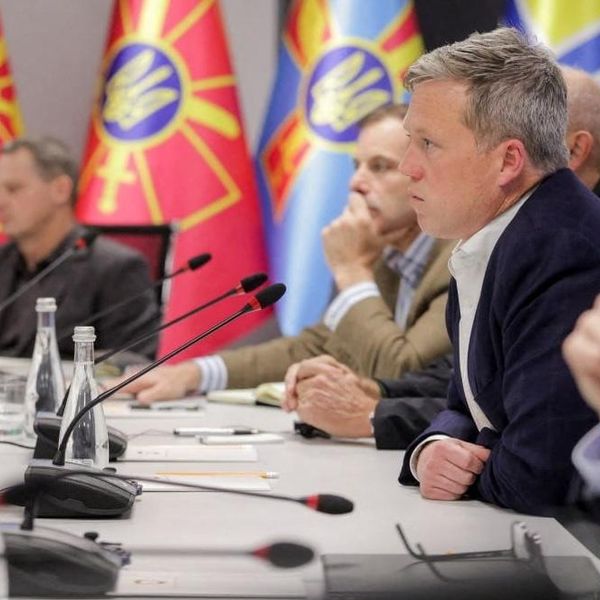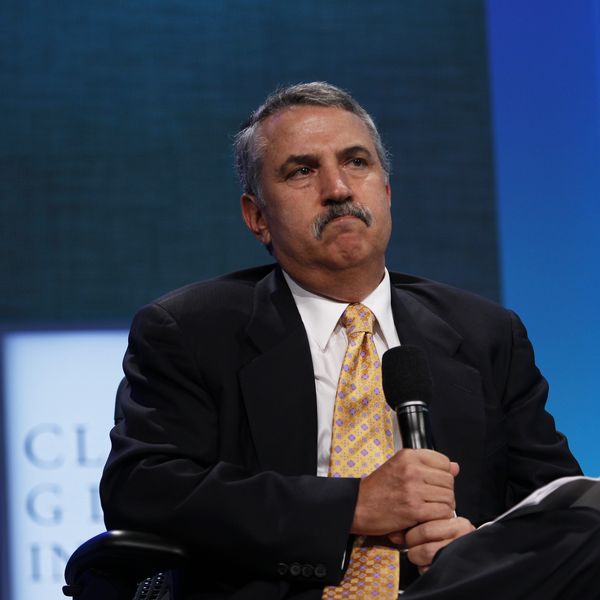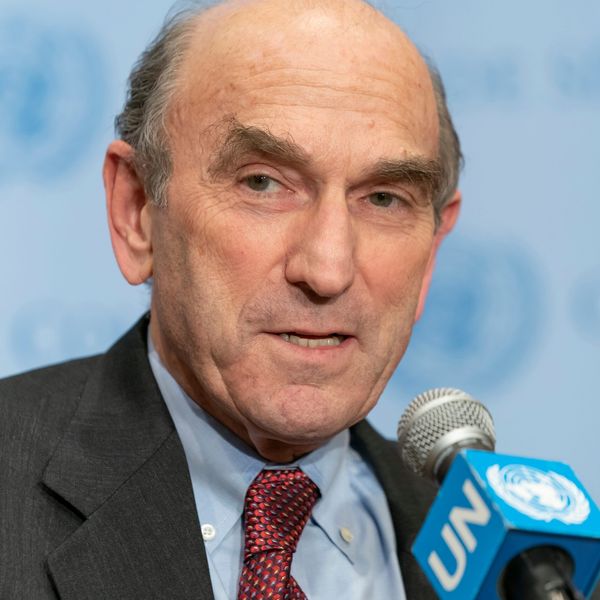Not so long ago, political analysts were speaking of the “G-2” — that is, of a potential working alliance between the United States and China aimed at managing global problems for their mutual benefit. Such a collaborative twosome was seen as potentially even more powerful than the G-7 group of leading Western economies. As former Undersecretary of the Treasury C. Fred Bergsten, who originally imagined such a partnership, wrote in 2008, “The basic idea would be to develop a G-2 between the United States and China to steer the global governance process.”
That notion would become the basis for the Obama administration’s initial outreach to China, though it would lose its appeal in Washington as tensions with Beijing continued to rise over Taiwan and other issues. Still, if the war in Ukraine teaches us anything, it should be that, whatever the desires of America’s leaders, they will have little choice (other than war) but to share global governance responsibilities with China and, in a new twist on geopolitics, with India, too. After all, that rising nuclear-armed nation is now the most populous on the planet and will soon possess the third-largest economy as well. In other words, if global disaster is to be averted, whether Americans like it or not, this country will have little choice but to begin planning for an emerging G-3.
Two questions come to mind immediately: Why the G-3, and why is its emergence likely to be such an inevitable outcome of the war in Ukraine?
Starting with the second of those critical questions, the G-3 lies in our future exactly because neither the United States nor Russia has proven capable of achieving what its leaders might consider a satisfactory outcome to that war. On Moscow’s side, the possibility of wiping out Ukraine as a functioning state has proven a remarkable failure; on Washington’s, the utter defeat of Russia and the demise of Vladimir Putin appears highly unlikely.
Amid the seemingly never-ending catastrophe of the war in Ukraine, it’s become increasingly evident that China and India are likely to shape its final resolution. Russia can’t keep fighting without the support of those two countries, thanks to their refusal to abide by harsh Western sanctions, their continuing trade with Moscow, and their massive purchases of Russian fossil-fuel reserves. In addition, neither of those countries wants the war to escalate or drag on for much longer, given the harm it’s doing to the prospects of global growth. For the Chinese, in particular, it’s been generating friction with crucial trading partners in Europe who resent Beijing’s continuing ties to Moscow. For their own reasons, therefore, the leaders of those two countries are likely to put increasing pressure on both Moscow and Kyiv to seek a negotiated outcome that will, it goes without saying, satisfy neither side.
At the same time, while the war in Ukraine has exposed the startling weakness of Russia’s previously vaunted military, it has also revealed in a striking fashion the limits of American power. After all, when the war began in February 2022, President Joe Biden was confident that most of the world would join the U.S. and Europe in isolating Moscow by, among other things, halting purchases of Russian energy supplies and imposing tough sanctions on that country. For him, this was still the American Century. “The United States is not doing this alone,” he declared at the time. “For months, we’ve been building a coalition of partners representing well more than half of the global economy… We will limit Russia’s ability to do business in dollars, euros, pounds, and yen to be part of the global economy.”
As it happens, we seem to have entered a new yet-to-be-defined epoch characterized by diminishing U.S. global clout. After all, despite determined efforts by Washington and its NATO allies to limit Russia’s access to the global economy, Moscow has largely succeeded in keeping itself afloat, even while financing its ever more expensive military disaster in Ukraine. Thanks for this go significantly to China and India, which have continued to buy enormous quantities of Russian oil and natural gas (even if at steeply discounted prices).
No less significantly, Washington has largely failed to persuade most of the global South, including key rising powers like Brazil, India, and South Africa, to embrace President Biden’s view of the Ukraine war as an “existential” struggle between liberal democratic states and illiberal autocratic ones. As he put it in a speech delivered a year ago in Warsaw, “We [have] emerged anew in the great battle for freedom, a battle between democracy and autocracy, between liberty and repression, between a rules-based order and one governed by brute force.”
But outside Europe, such ringing statements have largely fallen on deaf ears, as non-Western leaders have emphasized their own national needs and decried the West’s hypocrisy when it comes to defending the global “rules” it claims to honor. In particular, they have complained about the way such sanctions imposed on Russia have raised food and fertilizer prices in their own countries, harming millions of their citizens.
“I would still like to see a more rules-based world,” S. Jaishankar, India’s foreign minister, typically told Roger Cohen of the New York Times. “But when people start pressing you in the name of a rules-based order to give up, to compromise on what are very deep interests, at that stage I’m afraid it’s important to contest that and, if necessary, to call it out.”
Little as Washington has attended to such perspectives, count on one thing: post-Ukraine, we will find ourselves in a new world order. After the expected Ukrainian spring/summer offensive, which is unlikely to dislodge all Russian troops from the lands they’ve seized since last February, India and China will almost certainly be nudging both countries toward a peace settlement aimed more at restoring the flow of global trade than upholding fundamental principles of any sort.
Indeed, the Chinese peace plan for the war, though ignored or reviled by most Western analysts, may end up proving the most effective blueprint for a settlement, with its vague call for respecting the sovereignty of all states and its emphasis on eliminating sanctions, restoring global supply lines, and freeing up the Russian and Ukrainian grain trade. Indeed, however reluctantly, even Secretary of State Antony Blinken has conceded that it might provide a template for a future settlement.
Why the G-3?
While the outcome of the Ukraine war still remains in doubt, count on one thing: the emergence of China and India as major actors in its resolution will help define the future world order — one in which the United States will have to share global governance responsibilities with China and India, the world’s two other major power nodes. Europe isn’t qualified to play such a role because of its internal divisions and dependence on U.S. military power; Russia isn’t because of the decline of its military and economic strength. The G-3 countries, however, possess some basic characteristics that set them apart from all other powers and are only likely to become more pronounced in the future.
Let’s start with population. In 2022, China, India, and the United States had the world’s largest, second-largest, and third-largest populations, jointly accounting for an estimated 3.2 billion people, or approximately 40% of all people on the planet. While India is expected to overtake China as the world’s most populous nation this year, those three countries are still likely to remain atop the population heap in 2050, hosting an estimated 3.4 billion people by then. Of course, no one knows how major famines, pandemics, or climate disasters may affect such numbers, but those populations do confer enormous advantages when it comes to production, consumption, and even, if necessary, war-fighting.
Next, consider economic clout. The U.S. and China have long had the world’s number one and two economies, with India in sixth place and rising, if still behind Japan, Germany, and the United Kingdom. It is, however, expected to overtake the UK this year and, in some projections, will reach number three by 2030. Together, the G-3 will then account for a greater share of global economic activity than the next 20 countries combined, including all the European economies and Japan. Consider that a form of power no one will be able to ignore.
The U.S. and China are widely assumed to possess the world’s two largest and most powerful militaries, with Russia still claiming the third spot, though its military has been severely diminished thanks to the war in Ukraine and isn’t likely to regain its prewar strength for years, if ever. India’s military is large indeed, with an estimated 1.4 million men and women in uniform (compared to China’s two million, Russia’s less than a million, and America’s 1.4 million), but it’s not as well equipped with advanced weaponry as the other three. The Indians are, however, spending billions of dollars on the acquisition of advanced combat systems from Europe, Russia, and the United States. As its share of global wealth increases, count on New Delhi to invest ever more money in the “modernization” of its armed forces.
There is one other area where China, India, and the U.S. lead the world in numbers: in their emissions of carbon dioxide and other climate-altering greenhouse gases. With all three continuing to rely on fossil fuels for a large share of their energy consumption, China, India, and the U.S. are expected to top the list of the world’s leading carbon-emitters for decades to come. According to the International Energy Agency (IEA), the G-3 will account for an estimated 42% of global carbon emissions by 2050 — more than Africa, Europe, Latin America, and the Middle East combined.
The G-3 in Practice
Total up all those factors and it’s obvious that China, India, and the United States are likely to dominate any future world order. Sadly, that doesn’t mean they’re destined to cooperate — far from it. Competition and conflict will undoubtedly remain an enduring characteristic of their relationships, with the ties between any two of them constantly waxing and waning. (Think of the revolving alliances and antagonisms between Eastasia, Eurasia, and Oceana in George Orwell’s prophetic dystopian novel 1984.) But of one thing we can be certain: no major global problem, whether it be climate change, economic catastrophe, another lethal pandemic, or a Ukraine-style war, will be solved if those three powers can’t figure out some form of cooperation, however informal.
There was at least one previous moment of three-way concordance. In November 2014, in the leadup to the Paris Climate Summit of the next year, President Barack Obama forged a working alliance with President Xi Jinping of China aimed at achieving a successful outcome and then incorporated Indian Prime Minister Narendra Modi into their joint effort. His meetings with Xi and Modi at the start of the Paris summit were, according to then-White House Deputy National Security Adviser Ben Rhodes, meant to “send a strong message to the world about their strong commitment to climate change.” Many analysts believe that the 2015 summit would never have succeeded had it not been for the combined leadership of Obama, Xi, and Modi.
Needless to say, that budding partnership was upended when Donald Trump entered the White House and terminated U.S. adherence to that agreement. All too sadly, in the years that followed, Washington’s cooperation with Beijing and New Delhi on climate change largely ceased, while American disputes with China over trade, Taiwan, and the South China Sea only grew more heated. Today, the leaders of the world’s top two economies are barely speaking and their armed forces appear poised for a violent clash at almost any moment. They also remain at odds over Ukraine, with Washington demanding that Beijing sever economic ties with Russia and the Chinese insisting on the legitimacy of their “ironclad” alliance with Moscow.
Again, all too sadly, such antagonisms are more likely to prove the norm in U.S.-China relations than that brief outburst of cooperation in 2014-2015. And while India has grown closer to the United States in recent years — in large part to balance China’s growing economic and military might — its leaders are loathe to become overly dependent on any foreign power, however closely aligned they might be in political terms. The prognosis, then, is for continued brittle and often tense relations among the G-3 countries.
Nonetheless, those three nations will have little choice but to deal with one another in some fashion when it comes to the major global problems confronting all of them. Climate change is certainly among the most pressing: if global carbon emissions continue to rise in accordance with the IEA’s current projections, world temperatures could soar to far more than 2.0 Celsius (3.6 degrees Fahrenheit) above the pre-industrial era, the target cap set by the Paris Climate Agreement. That, in turn, will ensure a calamitous new reality for all three countries (as well as the rest of the world), including extreme coastal inundation, widespread desertification, and profound water scarcity. None of them can avoid such an outcome alone. Only by working in concert to reduce global emissions might they avert what is otherwise likely to be climate catastrophe for themselves and the planet.
The same is true of any other major global challenge, including future severe economic crises, pandemic outbreaks, major regional conflicts, and the further proliferation of nuclear weapons. However uncomfortable the leaders of China, India, and the United States might be when it comes to collaborating with their counterparts, they will have little choice if they are to escape an increasingly calamitous future. Like it or not, they will have to embrace some form of G-3 collaboration, however little acknowledged it may be at first. In time, as they come to recognize their mutual interdependence, they might even find themselves collaborating in a more formal, amicable manner — to the benefit of all the inhabitants of planet Earth.
This piece has been republished with permission from TomDispatch.


